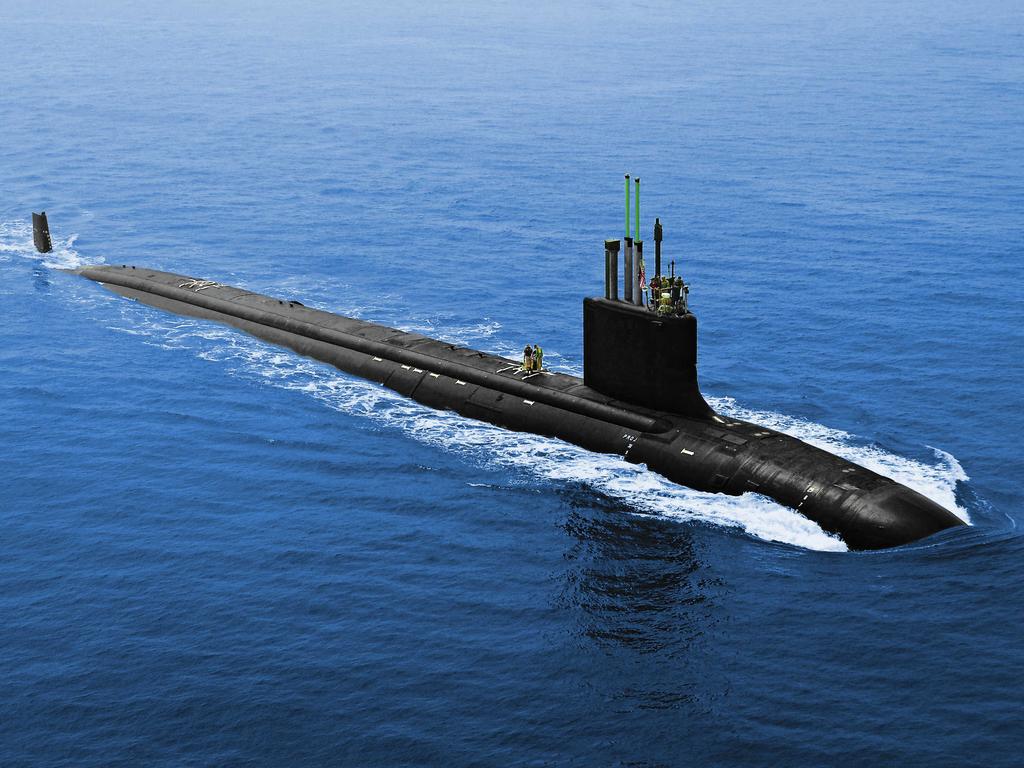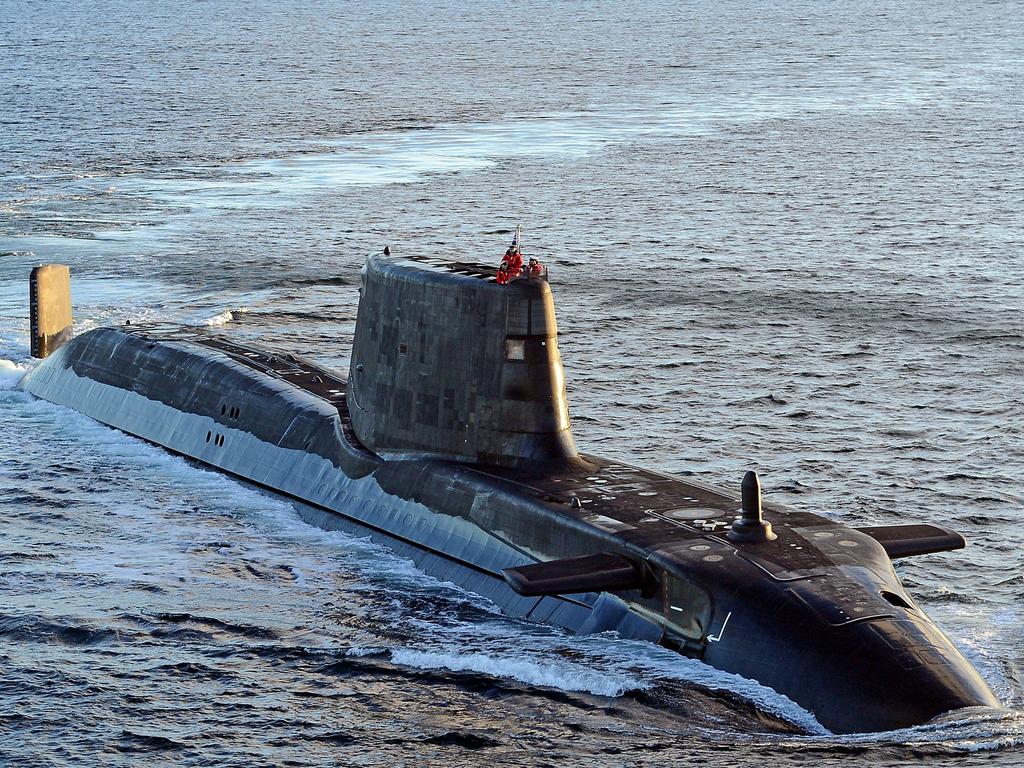We’re repeating all the same Collins mistakes

The acquisition process for SSNs will be highly challenging. We should at least take care not to repeat the mistakes that were made in the Attack program.
Three fundamental problems blighted that project from the outset. First, the process to replace the Collins-class submarines was started far too late and on too long a timeline to avoid a capability gap.
The second mistake was selecting a single contender on the basis of only a concept design and then eliminating further competition. This provided the French with monopoly power over price, delivery, local content and capability.
Finally, the Attack program was plagued by an excess of ambition – the fanciful desire to acquire a platform “with the performance of a nuclear submarine but with diesel-electric engines”. This led to the selection of a high-risk, developmental design, with an unacceptable schedule.
Unfortunately, the government has already made two major decisions on the SSNs acquisition that leave open the possibility of repeating all of these mistakes.
First, the decision not to acquire an interim class of new conventional submarines will deliver an even longer capability gap than under the Attack program. New submarines are also essential in order to manage the transition to SSNs and to hedge against their possible late delivery.
Australia cannot grow the uniformed submarine workforce from the present 900 to more than 2000 and train them to the highest standards just by extending the life of Collins. We need to order new submarines now, based on an updated Collins design.
The second unfortunate decision is to effectively eliminate competition in selecting Australia’s SSNs. The likelihood is that our AUKUS partners will decide which of them – probably the British – will provide Australia with SSNs. Without a competitor – and the French Suffren is the only option – we will again be negotiating with a monopolist on a “take it or leave it” basis.
In addition, the prospect of acquiring a US or British SSN takes us back to the third problem with the Attack program – overambition. Both the British and US navies operate large submarines – around three times the size of Collins – that may be too much for the smaller RAN to digest.

Defence has stated that Australia should acquire a mature submarine design. This will be difficult to achieve within AUKUS. With production of its PWR2 reactor now terminated, there will be no further construction of the British Astute-class after delivery of the seventh boat. The next British SSNs will use the new PWR3 reactor, largely an American design, and the platform will need to be bigger in order to accommodate it.
Were we able to acquire an American submarine, this would also probably be a new design. The US is already planning for the first SSN(X) to replace the Virginia-class in the early 2030s.
In both the British and American options, therefore, all the risks of a new design, including late delivery, will be present.
Both these new platforms will be bigger than the submarines they replace and require even larger crews. The Virginia-class has a crew of 135, 80 more than Collins, while Astute’s complement is 98. Would we be able to populate these very large submarines? Even the British, with a much bigger population than Australia, have difficulty in recruiting and retaining crews for their submarines.
The latest French SSN, Suffren, has some advantages for the RAN. It is a relatively recent design with only the first of class in commission. Reputedly, it has superior stealth characteristics. It has a crew of 60, only five more than Collins. Given the progress already made on Attack, whose reference design was Suffren, Australia should be able to acquire a mature French SSN in a shorter timeframe than a new American or British design.
French SSNs also have the advantage of using low enriched uranium (LEU) rather than the weapons grade, highly enriched uranium (HEU) that fuels American and British boats. Yet the Australian government saw this as a disadvantage. Ostensibly, French SSNs were ruled out because they need refuelling every 10 years, while American and British submarines do not need refuelling during their 30-year lives. Ministers stated that refuelling a reactor would require Australia to develop a nuclear industry, which was unacceptable.
Refuelling a French submarine is highly automated, however, and takes less than three weeks. Submarine refuelling would likely take place every 10 years at Stirling in Western Australia during the full maintenance process that takes two years to complete. In any case, Australian maintenance personnel for our SSNs will require training in nuclear technology, irrespective of whether the submarines need refuelling or not.
The government’s story that Australian industry cannot refuel nuclear reactors is also pure fiction. Australia has a small but vital industry producing nuclear medicines. Our 20MW nuclear reactor is located in Lucas Heights, a leafy Sydney suburb in Sutherland Shire, adjacent to the Prime Minister’s electorate of Cook. The Australian Nuclear Science and Technology Organisation has been refuelling nuclear reactors there for more than 60 years.
Unlike its predecessor, which was designed for HEU, the current OPAL reactor uses LEU fuel.

Following its operating cycle of 30-35 days, the reactor is refuelled and the spent fuel rods are stored on site. Since 1958, nine consignments of spent nuclear fuel rods have been sent to France for reprocessing, with the high-level waste then returned to Australia for disposal.
Given the potential benefits of competition in what will be Australia’s biggest military acquisition in history, it is difficult to see any significant downside in pitching a French SSN against a British or US submarine. One common assertion is that the Americans will not allow their latest technology to be deployed on French platforms. Yet the BYG-1 combat system and the Mk 48 torpedo, both technically joint US-Australian systems, were already being integrated on the Attack-class.
We might also acknowledge that the dysfunctional relationship on the Attack program was caused at least as much by Australian ineptitude in the acquisition process as by Gallic intransigence.
It is difficult to see any benefit in scrapping our strategic partnership with France. While a Barry McKenzie-style of diplomacy may trigger political resonance for the government, it has needlessly damaged an important relationship and constrained our options for acquiring nuclear submarines.
In Australia’s challenging security environment we need all the friends we can get, particularly traditional confreres equipped with nuclear weapons. After all, France has a larger presence in this region than Britain and a similar ambition to increase it.
The US administration, blindsided by the unprecedented recall of the ambassador of its oldest ally, may already be thinking of extending an olive branch to France. Time for FAUKUS, anyone?
Jon Stanford is principal of the think tank Submarines for Australia and a former senior official in the Department of Prime Minister and Cabinet.






The Morrison government’s decision to cancel the French Attack-class project in favour of nuclear-powered submarines (SSNs) was clearly justified, on both strategic and operational grounds. That does not let the government off the hook, however, for the very costly failure of the Attack program.